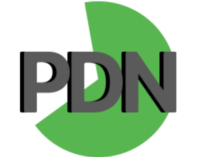Maximizing Returns on Retirement Accounts: IRA vs. 401(k)
Advertising
Planning for retirement is a crucial step in achieving long-term financial security. In the United States, Individual Retirement Accounts (IRAs) and 401(k) plans are two of the most popular retirement savings vehicles.
Understanding their differences, benefits, and strategies can help you make the best choice and maximize your returns.

IRA vs. 401(k): Key Differences
Both IRAs and 401(k)s offer tax advantages, but they differ in terms of eligibility, contribution limits, and flexibility.
- Eligibility and Access:
- 401(k): Offered by employers and typically includes the option for employer-matching contributions.
- IRA: Open to anyone with earned income; not employer-dependent.
- Contribution Limits:
- 401(k): For 2024, the annual limit is $22,500 (or $30,000 for those aged 50 and older).
- IRA: The contribution limit is $6,500 (or $7,500 for those aged 50 and older).
- Tax Advantages:
- Traditional 401(k) and Traditional IRA: Contributions are tax-deductible, and earnings grow tax-deferred until withdrawal.
- Roth 401(k) and Roth IRA: Contributions are made with after-tax dollars, but withdrawals are tax-free in retirement.
- Investment Options:
- 401(k): Limited to the investment choices provided by your employer.
- IRA: Offers a wider range of investment options, including stocks, bonds, mutual funds, and ETFs.
- Withdrawal Rules:
- Both accounts impose a 10% penalty for withdrawals before age 59½, with some exceptions.
- Required minimum distributions (RMDs) start at age 73 for traditional accounts.
How to Choose Between IRA and 401(k)
Your choice depends on your financial situation, retirement goals, and employer benefits.
- Employer Match Advantage:
- If your employer offers a match, prioritize contributions to your 401(k) to maximize free money.
- Maximizing Tax Benefits:
- High-income earners might benefit more from a 401(k) due to higher contribution limits.
- Roth IRAs are ideal for younger investors who expect their tax rate to be higher in retirement.
- Investment Control:
- Prefer flexibility? Opt for an IRA for broader investment choices.
- Split Strategy:
- If possible, contribute to both accounts. Focus on the 401(k) up to the employer match, then invest in an IRA.
Strategies to Maximize Contributions and Returns
- Contribute Consistently:
- Automate contributions to ensure regular savings.
- Catch-Up Contributions:
- If you’re 50 or older, take advantage of higher contribution limits.
- Diversify Investments:
- Spread your investments across asset classes to balance risk and growth.
- Monitor Fees:
- Minimize high-fee investment options that can erode long-term returns.
- Review and Adjust:
- Regularly assess your portfolio and rebalance as needed to align with your risk tolerance and goals.
Conclusion
Both IRAs and 401(k)s are powerful tools for retirement savings, each with unique benefits. By understanding the differences and adopting strategic approaches, you can maximize contributions, leverage tax advantages, and secure a financially stable retirement. Remember, the key is to start early, contribute consistently, and stay informed about your options.




